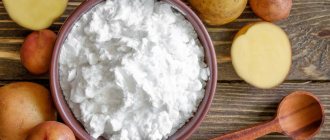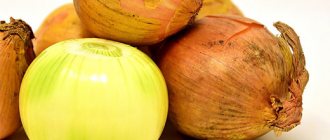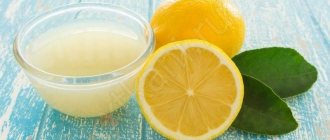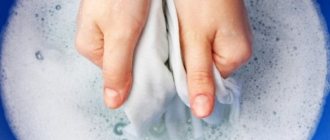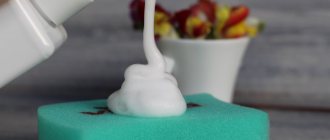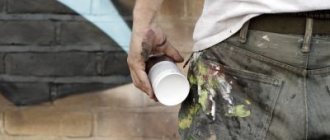Everyone periodically encounters greasy stains that appear during cooking or eating, which have to be washed off from their favorite things. Any holiday or fun party can turn into a nightmare if it results in stubborn stains. Such contaminants are reluctant to leave the fibers of soiled fabric. While cotton fabric can be degreased using a variety of methods, delicate garments require a more subtle approach. For cleaning, you can use a professional stain remover or a proven folk recipe. Today’s publication is a collection of tips on how to remove grease stains from silk, synthetics, cotton and other materials.
How to remove grease stains from silk items
Before starting treatment, you need to test the contamination remover. It is applied to the most inconspicuous part of clothing from the wrong side. If the color and structure of the material do not change within 20 minutes, the fat can be removed.
To achieve the best result, it is important to follow the algorithm of actions:
- Remove a wardrobe item.
- Turn it inside out.
- Place the dress on a clean white cloth.
- Moisten the selected tool, such as a cotton pad, in the composition to remove traces of oil. Apply it to the stain from the edges, moving towards the middle. This will prevent the fat from spreading even more.
- Leave for 30 minutes.
- Wash the outfit in warm water with any product for removing stains from delicate items.
- If necessary, repeat the procedure.
Such manipulations should be resorted to if it is not possible to take the item to dry cleaning.
Other contaminants
Before washing, wipe stains from dust and dirt with a napkin soaped with laundry soap. Rubbing soap directly over the stain is not recommended. Then the item should be washed as usual.
It is difficult to remove tea or coffee stains from silk fabric, but you can try. For this you need glycerin. Gently wipe the stain with a cotton pad soaked in glycerin, wait about thirty minutes and then rinse off the glycerin with warm water. Then wash the item completely in liquid detergent or shampoo.
An elegant silk dress often suffers from various alcohol stains. When you get home, immediately rinse the stain with warm water, then apply glycerin to it with a cotton pad. Very lightly, using circular movements, rub the glycerin into the fabric. Then rinse again with warm water. To obtain a faster result, glycerin can be heated, but not more than forty degrees.
Fresh wine stains disappear if the affected area is rinsed in warmed milk. The milk is rinsed first with cold water and then with warm water.
Unfortunately, quite difficult to remove stains on silk also form from your favorite perfumes and other perfumes. Perfume that gets on silk fabric can even discolor the fabric. To remove such a stain, use a napkin or cotton pad soaked in denatured alcohol. You can’t rub the stain; you need to blot it, as it were. If the result is unsatisfactory the first time, do the procedure again. Then wash the entire product.
Lipstick stains on silk can be easily dissolved by rubbing alcohol.
When removing stains on artificial silk with any acid (vinegar, lemon, oxalic acid), hydrogen peroxide, acetone, be sure to first test the product on an inconspicuous area.
And only after you make sure that the fabric is not damaged, you can use the selected stain remover. If the product is very expensive or heavy (a brocade curtain, for example), entrust its care to professionals, perhaps this method will be more expensive, but you will save nerves, effort and time and, most importantly, preserve the structure and color of the product itself.
Chemicals for removing traces of grease
Among the chemical agents for fighting stains that have proven themselves best:
- SA8 stain pre-removal spray from Amway;
- Vanish Oxi Action liquid stain remover for delicate fabrics;
- Ace Oxi magic;
- Udalix Oxi Ultra;
- cover remover;
- Sarma Active;
- Antipyatin. The product is available in the form of soap, powder or spray;
- Astonish Oxi Plus;
- Laundry baby soap Eared nannies with whitening effect;
- Faberlic, Edelstar universal stain remover pencil.
Some of them must be added to the water when washing, others are used to pre-treat the soiled surface. The quality of a product often does not depend on its cost. Therefore, you should not rely on price as a guarantee of high quality stain remover.
An important role in achieving the result is played by the device used to apply the stain removal composition.
Best suited for this role:
- soft brush;
- fresh disposable cloth;
- cotton pad;
- clean brush;
- cotton swab.
The softer the chosen tool, the less likely it is to ruin the delicate fabric.
Silk products require frequent ventilation and drying. They are afraid of direct sunlight and high humidity.
Features of silk fabrics
Silk fibers are highly smooth and durable.
The fabric made from them does not cause allergic reactions or mechanical irritation, absorbs moisture well and dries quickly. The slippery surface of the material does not accumulate dust. Therefore, natural silk does not contain dust mites and fungal formations. This makes the material ideal for sewing underwear and bed linen. Real silk is sensitive to water temperature when washing and ironing; the fabric may shrink or warp. Therefore, it is not easy to care for him. A dangerous enemy of delicate material is house moths. Silk items are very sensitive to humidity and ambient odors.
When choosing the size of clothes or cutting them, it is worth considering that silk shrinks by about 5% during wear and after washing . How to distinguish natural silk from its synthetic analogues? Natural fibers do not burn or melt, and do not accumulate static electricity.
Folk remedies for washing silk clothes
The following remedies will help you get rid of defects on delicate fabric at home:
- Baby powder. Sprinkle the powder generously onto the stain and leave for 15-20 minutes. During this time, its small particles penetrate deep into the matter and draw out moisture and fat.
- Starch. Potato or corn will do. Plays the role of an absorbent, absorbing foreign substances from tissue. They also pour it over the stain for a quarter of an hour, and then rinse it in clean warm water.
- Dry mustard. Even copes with stale stains. For this, 2 tbsp. l. mustard powder is poured with water to make a thick paste. The mass is heated and applied to the stain. Leave for about an hour. After this, wash off the greasy stain in warm water with a stain remover.
- Salt. Sprinkle the dirt in a thick layer and leave for about 20 minutes. After that, brush it off and sprinkle with fresh salt. The procedure is repeated until the grains completely absorb the fat.
- Laundry soap. Lather the soiled part of the fabric with a piece and leave for 8-9 hours. After this procedure, regular washing will return the items to their original appearance.
- Chalk or tooth powder. Sprinkle the stain, cover it with tracing paper, a blotter or a paper napkin. The iron heats up weakly. Place it on the surface to be treated for 5-7 minutes. After this procedure, the fat will transfer to the paper. If the stain does not come off the first time, the sheets are changed several times.
- Ammonia. By 3 tbsp. l. water add 1 tbsp. l. ammonia and 0.5 tbsp. l. salt. The suspension is poured onto the problem area. Leave for 15 minutes. Wash as usual.
If the ideal effect is not achieved at one time, the procedure is repeated. The use of natural materials when cleaning delicate and noble fabrics is preferable to the use of chemical compounds.
If you still can’t remove the greasy stain from the dress, you can sew an applique on this place from a material that matches the texture and color. Thanks to this, the model will become exclusive.
Petrol
Refined gasoline helps remove any stains. The only condition is to test the fabric for the effect of this product. The test is carried out on an invisible area of clothing, which will prevent damage to the fabric. Mode of application:
- Place a clean cloth soaked in gasoline under the stain from the wrong side.
- A cotton swab is soaked in gasoline and the stain is treated with it. You should clean from the edges to the center so as not to increase the stain.
- Wash using soap powder.
Shampoo for oily hair will help remove greasy marks. Apply shampoo to the contaminated area for one hour. After this, the product is washed.
This technique will help remove grease stains. Blotting paper (several layers) is placed on both sides of the contaminated area. Iron this area with a heated iron. The fat transfers to the paper, leaving the fabric clean.
If none of the tried methods helps, then fantasy will help remove the greasy stain. A silk product should be repainted completely, or only the dirty area should be painted over. Everything is simple and unusual. The stain will disappear and your mood will improve.
Preventing stains on silk
The presence of natural silk in a wardrobe is a sign of elegance and luxury.
To maintain the impeccable appearance of clothes made from this material, you need to be able to properly care for it. There are rules by following which you can preserve the original softness and shine of the product for many years. For fabrics such as dupont, crepe de chine, colored silk, only dry cleaning is recommended.
If the care instructions allow hand washing, the item can be washed in cool water with a small amount of delicates gel. The detergent must not contain alkali. To prevent things from becoming electrified when worn, an antistatic agent or softener must be added to the water. This fabric should not be soaked. To maintain the brightness of the colors, you need to rinse the product in water with the addition of a few tablespoons of vinegar and rinse again in clean water.
If the instructions do not prohibit washing in a machine, the fabric should be packed in a net, use the most delicate mode and a temperature of less than 30 °C. It is better to refuse spinning. The washed item of clothing is hung on hangers to dry it, or laid out on a dry, clean terry towel.
Silk clothes are ironed slightly under-dried, turned to the left. The iron is turned on to the lowest temperature without steam.
If yellow splashes appear on clothes, they are removed by rinsing in water with the addition of vinegar essence. A couple of teaspoons of hydrogen peroxide or ammonia added during washing will return white silk to its original purity.
Any hair cosmetics, be it varnishes or foams, must be applied before putting on a silk item. Any drop of household chemicals can be detrimental to the material.
It is best to wear an outfit made of this noble and capricious fabric in those places where the possibility of staining it with fat is reduced to zero.
Source of the article: https://kliningovyj-raj.ru/mojka-i-mytyo/kak-vyvesti-zhirnoe-pyatno-s-shelkovogo-platya/
How to remove oil stains on silk - SimpleRule magazine, How to remove oil stains from silk.
Daily care and washing
Natural silk should be stored in a dry, ventilated area to prevent the item from becoming moldy or absorbing unpleasant odors. It is not recommended to fold clothes in a pile; it is better to hang them on hangers. Silk does not tolerate proximity to synthetics and polyethylene, so it requires fabric linen or cotton covers. They will protect things from moisture and sunlight. Take care of protection against moths: scented pads, repellers, etc. Do not treat silk products with chemical moth repellents, as they can damage the structure of the fibers.
How to wash silk at home?
Many washing machines have a special mode for washing silk items, but frequent machine washing will not benefit your favorite blouse or dress. It is advisable to wash the item by hand in almost cold water using special detergents. Regular powder and soap negatively affect the brightness and smoothness of the fabric. Silk fabrics cannot be soaked or bleached. For machine washing, use a special mesh bag. Silk should not be washed in hot water.
If clothing contains elements with batik painting, it cannot be washed at home. Fabric made from wild silk, dupont, crepe de Chine or multi-colored silk must be dry cleaned exclusively. Ironing it with a regular iron is also not recommended. Heavy natural silk used for decoration can only be cleaned dry.
How to remove grease stains on silk
Update date: 07/09/2020 17:08:50 3484
*Review of the best according to the editors of simplerule.ru. About the selection criteria. This material is subjective in nature, does not constitute advertising and does not serve as a purchase guide. Before purchasing, consultation with a specialist is required.
Stains on silk clothes can be quite difficult to get rid of. Especially considering that this fabric is very sensitive to washing or mechanical stress. And greasy stains themselves are considered one of the most difficult to remove.
But, in fact, if you use the right approach, you can even get rid of a greasy stain on silk. And we will give some effective and efficient tips.
What you need to know when washing silk
There are several rules to remember when cleaning stains from silk. Nothing impossible, just simple measures to prevent disasters when washing:
Check color fastness
. Some fabric dyes come off easily when washed. You can easily check the fastness of the paint by blotting the inside of the item with a clean, damp cloth (preferably white). If even a little color transfers from the clothing to the fabric, we recommend that you take it to a dry cleaner.
Avoid heat
. No hot water washing, no irons, no dryers. Silk loves the cold.
Wash with a mild detergent
. Delicate fabrics require delicate care. Take a special product for silk and wool.
Don't use bleach.
Strong chemicals such as bleaches are likely to damage the natural fibers of silk.
Check the label.
Some silk items are machine washable, some need to be hand washed, and some are dry clean only - take these items to the professionals.
Now you can start washing.
General recommendations
Natural silk is not cheap, but the price is justified. With proper care, the impeccable appearance of the product will please the eye for a long time.
To extend the life of products made from such fiber, you need to know and apply certain rules when cleaning:
- Washing in a washing machine is carried out only on a special cycle for silk; others may damage the fibers of the fabric.
- Cleaning in a drum can damage the threads, so products must be placed in special laundry bags.
- The temperature regime is strictly observed; hot water will ruin a dress or blouse forever. Washing is carried out in water, no higher than 30 degrees.
- Powdered detergents and laundry soap will negatively affect the appearance of the fibers; for cleaning it is better to use a liquid detergent for silk items.
- Stains are removed either by dry cleaning or using traditional methods. Store-bought bleaches and stain removers are not suitable for this type of thread. Chlorine-containing products are strictly contraindicated.
- Before starting to use stain-removing substances, a test is carried out, a small amount of the product is applied to an invisible area and wait a couple of minutes. If the fabric has not changed its characteristics, then you can safely use it.
- It is worth carefully studying the tag from the manufacturer; some types of silk fabrics can only be dry cleaned.
- Application of products is carried out from the edges to the middle, this will help to avoid the spread of contamination further.
- Contaminants can only be removed with a dry cloth.
Important! Iron the silk slightly damp; do not use a spray bottle to moisten it. Any liquid on dry fibers will leave stains.
How to remove stains from silk
If you find a greasy stain on silk clothes, you can use one of the following methods:
Act as soon as possible - dried stains are much harder to remove;
Gently blot the stained area with a clean cotton swab or paper towel to remove as much dirt as possible from the fabric;
Make a cleaning solution from a few tablespoons of lemon juice or white vinegar and the same amount of cool water;
Before using the solution, test it on a small, inconspicuous piece of silk;
Gently apply the solution to the stained area with a clean white cloth. Don't rub it in;
Wash your silk item as usual, following the instructions on the label.
If the greasy stain is also staining - for example, left by a piece of stew or other food that fell on clothing - then you will need to use a different method. As with most contaminants, you need to act quickly. But the methodology is the same:
Gently scrape off excess oil or grease;
Sprinkle the stain generously with talcum powder and let it soak in the grease for several hours, or leave overnight;
Carefully remove the powder from the fabric with a brush and wash the item as usual.
Talc can be replaced with baby powder based on it.
How to remove grease stains from silk using improvised means
If there is no talc in the household, then you can use other available means:
Laundry soap
– copes well with any fresh stains and does not harm delicate fabrics. Lather the oily area thoroughly, wrap it in a bag and leave it overnight. Wash the item as usual and rinse with plenty of water.
Starch
– will perfectly help cope with greasy marks on silk. Both potato and corn are suitable for cleaning. This method can also be used for stubborn stains. Mix 2 tablespoons of starch with a little water. Warm the resulting paste slightly and apply to the stain. Wash the item with a silk stain remover or laundry soap. If necessary, re-process. If the item remains starchy, rinse it several times.
Ammonia
– has a pungent odor, but copes well with grease stains. But under no circumstances use it in its pure form. Work with ammonia in a well-ventilated area and use hand skin protection. Mix two tablespoons of water, two tablespoons of glycerin and one tablespoon of ammonia. Test the resulting solution on a small, inconspicuous area of fabric. Apply it to the greasy stain and leave for 30 minutes. Wash the item as usual.
Chalk
– perfectly removes grease stains. Apply chalk powder to both sides of the stain and leave for an hour. Then simply remove any remaining chalk with a clean damp cloth and wash the item as usual.
It is worth remembering that vinegar and ammonia are caustic. Because of this, they can damage synthetic fibers and “knock out” the paint from the fabric. Before using ammonia or vinegar based products, test them on an inconspicuous area of the fabric.
When washing silk after treatment with cleaning products, follow the instructions on the clothing label and use only household chemicals suitable for this type of fabric.
Attention! This material is subjective in nature, does not constitute advertising and does not serve as a purchase guide. Before purchasing, consultation with a specialist is required.
Source of the article: https://simplerule.ru/kak-ubrat-zhirnye-pyatna-na-shyelke/
The best ways to remove old grease stains, well-known folk remedies, How to remove an oil stain from silk.
How to remove old grease stains at home
Grease stains on clothes bring discomfort, as they are very noticeable and greatly spoil the appearance. The most difficult stains to remove are those that appeared a long time ago and have had time to be well absorbed into the fabric. To remove them, it is necessary to use more effective means that can dissolve even such contaminants.
Basic rules for breeding and preparation of material
Stains can be removed using modern means or traditional methods. There are a number of rules, following which you can easily remove any greasy mark on clothes:
- To ensure that after removing the oily stain there are no traces left on the material, it is necessary to place several layers of thin material under the fabric (it is better if it is cotton knitwear).
- If the fabric is thick and the dirt has penetrated deeply into the structure of the material, you should use a medium-hard brush, well soaked in a solvent, instead of cotton fabric.
Popular household chemicals for quickly removing old grease stains from various fabrics
In order for the result to be good, it is necessary to find out the composition of the fabric and select the appropriate detergent.
Knitwear
Oily stains can ruin the appearance of any knitwear product. Therefore, before removing a grease stain on knitted fabric at home, you need to test each method on a small area of the fabric. To remove greasy stains use:
- Special cleaning agent for dishes. The grease-dissolving composition is applied to the stain for a quarter of an hour, after which the item is washed and rinsed thoroughly in warm water.
- Laundry soap 72%. Contaminated areas are generously soaped and left for several hours. If the mark is fresh, it will be enough to wash the clothes in a soapy solution.
- Petrol. Before removing a grease stain from clothing, you must read the tag. The dirt should be soaked in gasoline using a cotton swab. For the fat to disappear without a trace, it is enough to keep the liquid on the canvas for just a few minutes. Then the item should be washed by hand or in a washing machine. To remove the smell of gasoline, clothes must be dried in the open air.
- Acetone or nail polish remover. If the stain is small, just drop a few drops onto the problem area and rub the liquid over the greasy mark. After 30 minutes the material can be washed.
- Salt. If it is not possible to use a detergent, but the oily trace needs to be removed urgently, cover it with salt. The procedure can be carried out several times. When finished, wipe the area with bread crumbs.
- Laundry soap and sugar. The procedure looks like this: the oily stain is moistened with hot water, then the problem area is soaped with laundry soap, sprinkled with sugar and rubbed in lightly. After 15 minutes, the knitwear can be washed.
- Shaving foam. It also copes well with oil marks. Just rub it into the problem area and keep it on the fabric for about 15 minutes. After the knitwear is well saturated with the composition, it must be washed.
- Medical alcohol. In order for it to remove the oily stain, you need to apply the liquid with a cotton swab to the knitwear and keep the composition on the fabric for at least an hour.
White cotton
You can remove fat from cotton fabric with dishwashing detergent, laundry soap with sugar, salt, and soda. You can also achieve good results:
- Crushed chalk. Apply chalk powder to a fresh mark and leave it overnight. Then you will need to wash the area with laundry soap.
- Alcohol. The contaminated area is moistened with ethyl composition and locally washed. If necessary, the procedure is carried out several times.
- Potato starch. Powder of organic origin is poured onto the greasy area and lightly rubbed into the problem area. After 15 minutes, the procedure is repeated with a new portion of starch until the contamination disappears.
- Ammonia. The chemical solution is poured onto the oily mark for 10 minutes, then washed off with laundry soap.
- Acetic acid 9%. The contaminated area of fabric is soaked in the solution for 5 minutes, then the cotton is washed and rinsed.
- Hydrogen peroxide. This liquid product can simply be poured onto an oily mark. After 10–15 minutes, the item can be put into the washing machine.
- Tooth powder, baking soda or baby powder. Any available powder is poured in a thin layer (3 mm) onto the greasy stain. A new napkin is placed on top and ironed. Then oppression is placed on it and held for at least 7 hours. Several treatments may be required to completely eliminate fat.
Colored fabric
Removing stains on colored clothes requires special delicacy, as the problem area can be discolored. In this case, it is possible to remove greasy stains:
- Potato starch. A thick paste is applied to the stain for a 10-minute period. Moistened paper napkins are placed under the fabric.
- Shampoo for oily hair. It helps if you pour it onto a colored canvas and leave it on the problem area for 60 minutes. Then the item must be washed.
- Vinegar with mustard powder and salt. The components are mixed in equal proportions, dissolved in a small amount of water and applied to the greasy stain. The composition remains on the fabric for 20 minutes, after which the item is washed.
- Drink Sprite (or Coca-Cola). This product should be used to remove stains on dark colored clothing. Simply pour the drink onto the oily mark and hold it on the problem area for 2-3 hours. After this, the item needs to be washed.
- Tooth powder. It is poured onto the dirty area and rubbed in lightly. Once saturated with fat, the powder is removed and another is applied. The cleaning process is performed several times until the oily trace is removed.
- Bread crumb. The product is soaked in water, then spread over the dirty area for a 20-minute period. At the end of this time, the clothes are washed.
- Laundry soap. The alkaline environment of the soap solution will not harm colored fabric, so soapy fabric can be safely soaked for several hours.
Important! Before removing grease stains from colored clothing, you should make sure that it has a high-quality paint job. To do this you will have to test it. It will be necessary to apply a stain-removing composition in a remote place and see if it leaves light stains on the fabric.
Black fabric
You can clean black fabric from greasy stains using the following methods:
- Laundry soap. It is necessary to soap the dirty area and leave for several hours. The result will be positive if the oily trace has not had time to age.
- Sugar. You can speed up the cleaning process if you sprinkle it on the soapy area and wipe it. The sugar stays on the fabric for no longer than 15 minutes, then the clothes are washed.
- Salt. It absorbs oil well. Salt is sprinkled generously and rubbed into the greasy stain. It will take several times to wipe off stains with salt. Do not rub chemicals in with force. This factor can lead to the problem area spreading to the sides.
- Blotting paper, which is placed on both sides of the fabric in the area of contamination and ironed with a warm iron. The procedure is carried out until the oil is completely absorbed into the special blotting paper. When a slightly noticeable mark remains, the clothes can be washed in a machine.
- Mustard powder, which is mixed with water until creamy thick and rubbed over the dirty area. After 30 minutes, the clothes can be washed.
- Glycerin. The drug, purchased at the pharmacy, is applied to the contaminated area for 30 minutes. Then the solution is wiped with a cotton swab, and the item is washed as usual.
Natural silk
Natural silk has always been considered a capricious fabric. It should only be washed by hand, use delicate products, cannot be bleached, and cannot be rubbed. But it is not all that bad. If you know some of the features of caring for silk products, then you can easily cope with washing an evening dress, a thin gauze cape, bed linen, and heavy curtains at home.
- Any silk fabric does not like sudden changes in temperature. Therefore, it is necessary to wash and rinse products at the same water temperature, no higher than forty degrees. Naturally, you should not go to extremes and measure the temperature of the water with a thermometer; it is enough for it to be warm for your hands.
- When choosing a laundry detergent, it is better to choose special neutral liquid detergents; a simple shampoo, without any additional effects, is also good. White toilet soap will also work, but it must first be dissolved so that there is no sediment in the water that can remain on the fabric and cause streaks.
- A silk item can be soaked in a prepared soap solution, leaving it in the water for about fifteen minutes. Wet silk fibers are very fragile, so it is strictly forbidden to rub, wrinkle, or stretch the product, as this may cause it to lose its shape forever.
- You need to rinse silk items several times, very carefully. With each subsequent rinse, the water temperature should be reduced by several degrees. The last time the silk is rinsed in cold water. If the product is colored, you can add a little vinegar to the water to preserve the brightness of the colors.
- It is strictly prohibited to twist the product after washing. A silk item must be wrapped in a soft fabric that absorbs water well; you can take a terry towel and lightly blot it.
- It is better to dry silk products in a horizontal position, laid out on a soft cloth. Make sure that the fabric on which you place the wet product does not fade. If the item is very bulky (curtains, bed linen), simply throw it over a thick rope; it is better not to use clothespins. They may leave marks on the fabric.
- Do not dry silk in direct sunlight or near heating appliances.
- Iron silk products only from the wrong side when wet. The iron is set to the “silk” mode. If the iron does not indicate the types of fabrics, then set the temperature to no higher than one hundred and fifty degrees.
If the product is dry, do not spray it with water; splash marks may remain on it. It is better to completely wet the item again and then iron it in a half-dried state.
Traditional methods of removing stains
For those who don’t know how to remove grease stains using improvised means, experts have developed a list of options. Stains are easily removed with salt, laundry soap and vinegar.
Laundry soap
If an oily mark has just appeared, you should immediately wash the problem area with laundry soap. If once was not enough, then the procedure will have to be a little more complicated. The dirty area should be heavily soaped, wrapped in a plastic bag and left there overnight. Clothes should be washed in the morning. To enhance the effect of soap, experienced housewives advise grinding it on a grater, dissolving it in warm water, and only then soaking the dirty item overnight. You can speed up the process with dry sugar, which is found in every home. The soaped area should be sprinkled with it and rubbed. After 20 minutes, the clothes can be washed.
There is a simple recipe for how to quickly remove an old greasy stain with a hot saline solution. It is simple, as it requires 150 g of salt poured into 1 liter of water. The stained area will need to be kept in the solution until the dirty mark disappears without a trace.
A mixture of salt and soda in a 1:1 ratio breaks down fat well. The composition is applied to a dirty area moistened with water for 30–60 minutes, then the material is thoroughly washed with laundry soap.
Turpentine
Turpentine combined with ammonia in equal parts effectively removes greasy stains. The solution is applied with a swab to the dirty area and kept on the cloth for up to 3 hours. Then normal washing is recommended.
Ammonia
To remove greasy marks, you can use ammonia. To do this, take 1 tsp. ammonia, which is mixed with 100 ml of water. The dirty item is soaked in the solution for 6 hours, after which you can rinse and wash it in the usual way. This technique should be used in the fight against oily areas only on light-colored fabrics. Dark fabrics may leave a bleached stain.
Vinegar
In practice, housewives have noticed that vinegar exhibits the properties of an effective stain remover. It is often used to remove grease stains on white cotton fabric in its pure form. A greasy stain is removed in a solution of nine percent vinegar. To wash delicate fabrics, prepare a mixture of water, vinegar, salt and mustard, which are mixed in equal proportions.
Attention! To remove stains, do not use vinegar in excess of a 9% concentration.
Starch
Starch can be used to remove grease from fabrics that cannot be washed by hand or in a washing machine. The course of action is as follows:
- The freshly contaminated area is covered with dry starch.
- The powder is lightly rubbed into the fabric and kept in it for at least 20 minutes.
- The procedure is repeated several times until the contamination disappears from the material without a trace.
For your information! For old stains you will need to use hot starch. The powder is also applied to the old stain, covered tightly with a white cloth on top and slightly heated with an iron. Since the fat will be absorbed into the powder slowly, the procedure will have to be repeated several times.
Where do grease stains come from?
Human skin constantly secretes a substance that consists of lipids, salt and water. This is why yellow stains appear on collars and cuffs that are difficult to wash off. They are especially noticeable on light cotton fabric: blouses, shirts, underwear.
Typical stains appear on clothes during the process of preparing and eating food or during any technical work.
Fat comes from different origins:
- vegetable: various oils obtained from fruits, seeds, grains, seeds;
- animal: lard, cream, loy;
- synthetic: emulsions and pastes for lubricating rubbing parts.
Therefore, the chemical composition of the pollutant is significantly different, therefore, it must be removed in different ways.
What you really shouldn't do is put the item you've put a greasy stain on into the washing machine. The greasy area must first be treated, otherwise surfactants under the influence of temperature will help the fat penetrate deep into the fibers, making it impossible to remove it.
